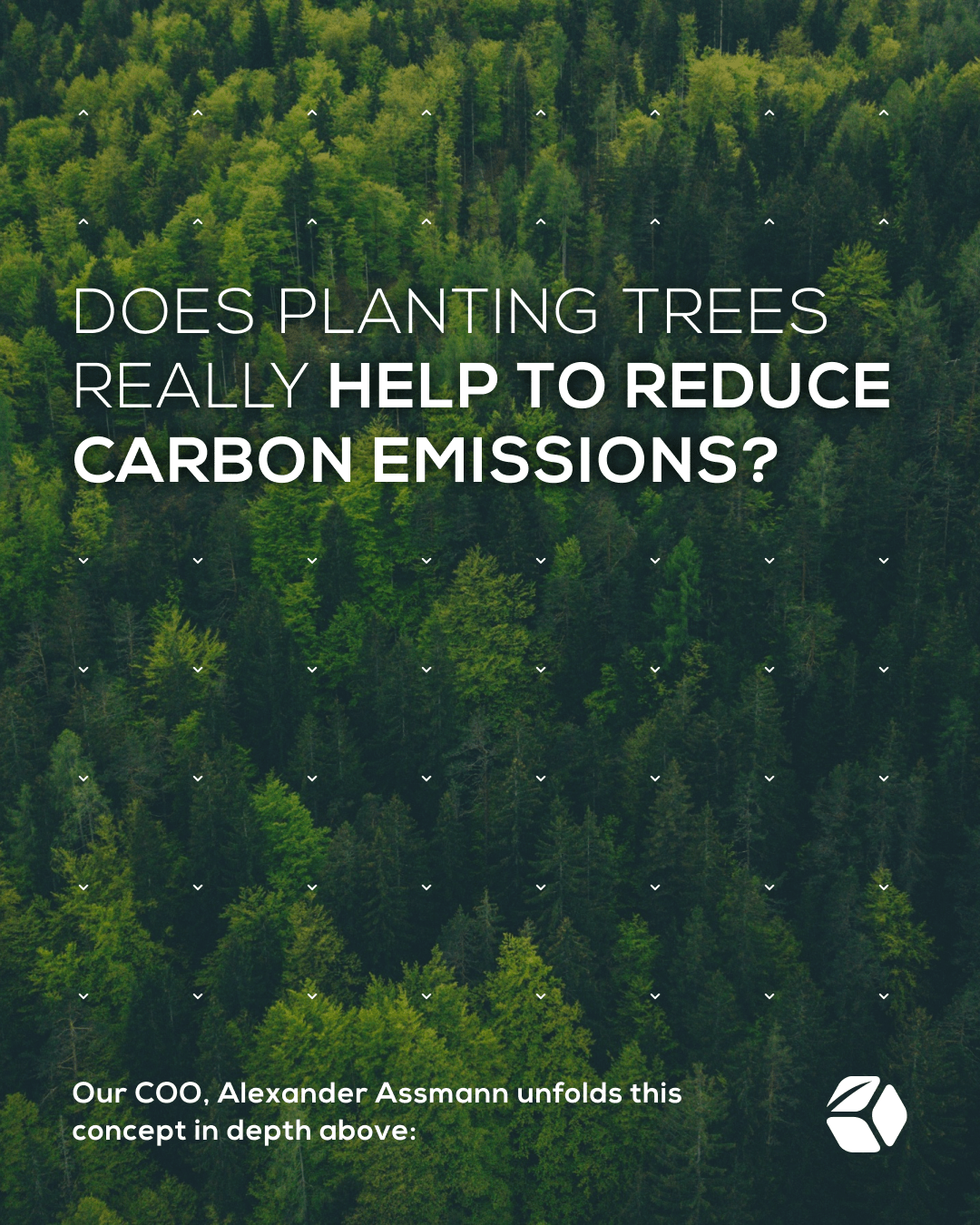Does planting trees help reduce carbon emissions?
If someone was to ask You – how can we reduce emissions and make the world “greener” – would You say planting trees is a valid solution?
It seems so obvious – we plant trees, they take carbon dioxide from the air and thus reduce greenhouse gas emissions, right? And that’s what many companies are marketing and advertising as their contribution in the war against climate change. “Buy from us, we plant trees to save the planet!”1
First, let’s look at how this is supposed to work and why planting trees is so appealing.
All plants with green leaves use photosynthesis to produce sugar, which the plant uses as fuel. The inputs for photosynthesis are carbon dioxide, water, and sunlight; the outputs are sugar and oxygen. This is how carbon dioxide is taken from the air and stored in the fibers of trees. It is estimated that a mature tree will take up about 22 kilograms of carbon dioxide from the atmosphere in a year, and in exchange release oxygen.
But what happens after a tree dies? Where does the carbon go then?
To keep the carbon from being released into the atmosphere, we would need to make sure that the tree doesn’t decompose or burn or be destroyed in any other way. If that happens, all the carbon the tree took from the atmosphere, is again released and there will be no carbon-positive effect.
If you want the tree to permanently remove carbon from the atmosphere, you would need to make sure the tree stays a solid tree forever. FOR EVER! Is that even possible?
So – how does planting trees help reduce carbon emissions? A tree has almost a balanced cycle – it grows by concentrating materials from its surroundings and forming them into its mass. After the tree dies, it decomposes, and its materials are released back into nature and the cycle begins again for another tree. If we estimate the life expectancy of an average tree to be 100 years, then we have a 100-year cycle.
The only way to reduce emissions in a meaningful way is by reducing emissions from fossil fuel sources. Unlike trees, fossil fuels do not have a balanced cycle, due to the timeframe in which we operate. Fossil fuels were deposited inside the ground over a very long period of time, thousands of years. If we excavate them and use them for energy, it will take thousands of years for nature to be able to return to a balanced state.
Sources:
1 https://www.alexela.ee/et/kogukond
1 https://www.alexela.ee/en/fuel-alexela-and-plant-trees
1 https://www.eetgroup.com/en-eu/about-eet-group/responsibility
1 https://www.americanforests.org/article/timberland-commits-to-plant-50-million-trees-over-next-five-years-3/
1 https://www.intelligentliving.co/easyjet-first-offset-emissions-planting-trees/
Other articles on the topic:

